James O’Barr’s black-and-white comic book The Crow was one of the great success stories of the indie comics market of the 1980s and 1990s. A touchstone for Goth culture, the four-part miniseries—originally written as a way for O’Barr to work through the death of his girlfriend at the hands of a drunk driver—was a massive hit for Caliber Comics, and it spawned an impressive collection of spinoffs in comics, prose, and screen form.
The comics continued to be published by a variety of publishers, most recently IDW, while a few novels and a short story anthology were also put out. When the film rights were sold, Alex Proyas, who had directed many music videos, shorts, and an independent science fiction feature, was tapped to direct.
The first film gained a particular notoriety due to its star, Brandon Lee (son of Bruce Lee), dying during filming. (His father also died while making a film, though the elder Lee died of a cerebral edema.) With only three days of filming left, Lee was shot by an improperly maintained prop gun loaded with blanks.
Several scenes were rewritten and reshot (the new rewrite was uncredited, but performed by Law & Order staffers Walon Green, René Balcer, and Michael S. Chernuchin), using Lee’s stunt double and computer trickery.
Rather than re-cast the role for the sequel, City of Angels, they decided to make the new film with a different person being resurrected by a crow to avenge his own death. Vincent Pérez was cast in the role, though early drafts of the script had a female Crow and also brought back Top Dollar, the bad guy from the first film. Director Tim Pope and writer David Goyer dropped both those elements, bringing in a new bad guy and having a male Crow.
This template was followed for the other two sequels, which were direct-to-video, Salvation and Wicked Prayer, with, respectively, Eric Mabius and Edward Furlong in the title roles. Each film has had a director with minimal feature film experience prior to helming a Crow movie: Proyas and Pope both got started in music videos, while Salvation‘s Bharat Nalluri has mostly directed television, while Wicked Prayer‘s Lance Mungia had just directed two independent projects. (Wicked Prayer is also that rare beast, a movie based on a tie-in novel, as the film was adapted from a Crow novel by Norman Partridge.)
There was also a television series, subtitled Stairway to Heaven, starring Mark Dacascos, which aired on Canadian TV in the 1998 season. That series was a direct spinoff of the first movie, with Dacascos playing Eric Draven.
“Caw-caw! Bang! Fuck, I’m dead!”
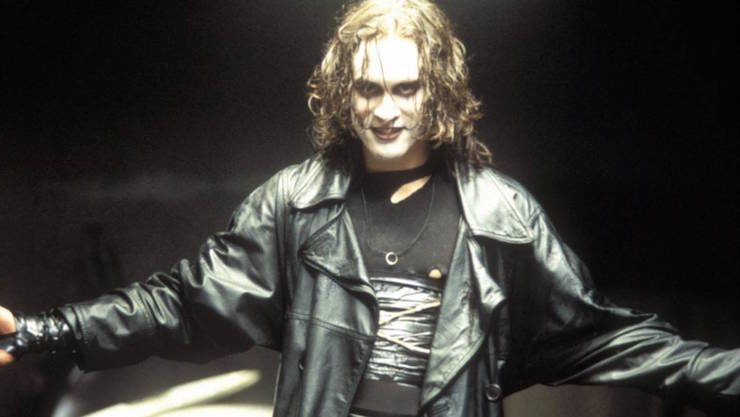
The Crow
Written by David J. Schow and John Shirley
Directed by Alex Proyas
Produced by Edward R. Pressman and Jeff Most
Original release date: May 13, 1994
It’s “devil’s night,” the 30th of October, when tons of arsons tend to happen in downtown Detroit. On top of that, we’ve got a double murder, as an apartment was broken into and trashed, its two occupants killed. The couple was about to be married the next day on Hallowe’en. Shelly Webster was assaulted, raped, and stabbed, and is taken to the hospital. Her fiancé Eric Draven was shot and stabbed and thrown out the window. Draven is DOA, while Webster hangs on for 30 hours in the hospital before she dies.
One year later, a crow lands on Draven’s grave and he then crawls out of it. He returns to his apartment, which inexplicably still has crime-scene tape on it. Nobody has touched a thing—the window’s even still broken. And their cat is still there, perfectly healthy, er, somehow. Draven puts white-face mime makeup on his face, and also has flashbacks to the attack. Four guys—T-Bird, Tin Tin, Funboy, and Skank—broke in, assaulted Webster and trashed the apartment. When Draven came home to this, Tin Tin stabbed him and Funboy shot him, with Skank throwing him out the window.
Webster galvanized the tenants of the building to sign a petition, which pissed off Top Dollar, the immaculately coiffed gangster who apparently owns the building. T-Bird’s gang works for him, and they were tasked with scaring her off the petition. It got out of hand when Draven showed up.
Funboy is sleeping with a waitress named Darla, who also is the mother of Sarah. Darla is a sufficiently awful mother that Sarah spent most of her time with Webster and Draven—at least until they died. Sergeant Albrecht—the first uniform on the scene of the double murder—keeps an eye on Sarah.
Tin Tin sells some stolen merchandise at Gideon’s Pawn Shop, then is attacked by Draven, who cannot be permanently harmed or killed. Every wound heals instantly. Tin Tin finds this out the hard way, and then is on the receiving end of every knife he threw at Draven. After drawing an image of a crow in blood near Tin Tin’s corpse, he goes to Gideon’s. Once he locates the engagement ring that T-Bird’s gang pawned after taking it from their apartment, he beats up Gideon and stabs him in the hand, tells him to tell the rest of T-Bird’s gang that death is coming for them, then torches the shop. Albrecht sees him, but is distracted by looters of the pawn shop, and so Draven gets away.
Draven’s next target is Funboy, whom he finds shtupping Sarah’s mother. Funboy shoots him in the hand, which heals instantly; Draven shoots Funboy in the knee, which doesn’t. Before he passes out, he laments that the sheets are stained. After scaring Darla straight, Draven injects several of the needles in the apartment into Funboy’s chest, and he dies of an overdose.
Gideon is brought to Top Dollar, who is skeptical of his story of a clown-faced immortal ghost, and so stabs him in the throat. His right-hand/lover Myca is intrigued, however.
Draven visits Albrecht at home to get the full story of the murder. A former detective, he was demoted to a beat cop due to politics. (As he puts it to one detective, he lost his gold shield because he wasn’t a big enough asshole.) He also stayed with Webster in the hospital until she died. Draven receives that memory when he touches Albrecht, and it just reinforces his desire to seek out vengeance.
Draven also saves Sarah from being run down by a cab, and Sarah recognizes him, but he disappears before she can talk to him in depth.
Next on the hit parade is T-Bird, who is getting supplies with Skank. Draven kidnaps T-Bird in his muscle car (also a T-Bird) and drives him to the pier. A cop car and Skank (the latter having carjacked someone who had just run him over) give chase through the unrealistically empty streets, but they crash into each other, leaving Draven to take T-Bird to the pier, tie him to the driver’s seat, and set off all the explosives he had for his arson habit in the trunk. They can only identify T-Bird from dental records. Draven also pours gas on the ground in a pattern that allows him to light a fire in the shape of a crow.
Skank, badly hurt from vehicular assault by both his carjacking victim and the police, goes to Top Dollar, scared shitless. Top Dollar’s lieutenant, Grange, has gone to Draven’s grave and found it dug up and opened. (Nobody’s done anything about that? Who’s caretaking this cemetery????) Top Dollar brings Skank to his summit meeting, which T-Bird normally attends. Draven shows up as well, saying he only wants Skank. Top Dollar refuses to turn him over and he orders his people to all shoot Draven. This proves to be a spectacularly bad career move, as they do shoot him, but he doesn’t stay dead, whereas when Draven attacks them, they all die—including Skank, whom he throws out a window.
Draven finds Sarah at Webster’s grave. He gives her his necklace. Shortly thereafter, Top Dollar kidnaps her and takes her to a church. (He probably knew of her connection to Draven from Funboy’s dalliance with Darla.)
Sure enough, Draven comes to her rescue, but at Myca’s urging, Grange shoots the crow that follows Draven everywhere, and with the crow wounded, Draven no longer can heal himself. However, Albrecht shows up, and lots of gunplay ensues. Grange is killed, Albrecht is wounded. Myca grabs the wounded crow, but before she can claim its power for herself, the bird pecks her eyes out and kills her. Draven and Top Dollar confront each other on the church roof in the rain. While Draven is weakened by the crow being wounded, he is able to convey memories with a touch, and he gives Top Dollar Albrecht’s memories of the thirty hours of pain Webster suffered before she died. Then Draven tosses Top Dollar over the side and he is impaled on a gargoyle.
Draven is able to go to his final rest with Webster, and lives happily ever after. Or something. Albrecht is still wounded and suspended, and Sarah still lives with a junkie, but hey, at least Top Dollar’s entire organization is trashed, which should make the city safe for a while…
“A murder of crows—think about it.”

The Crow: City of Angels
Written by David S. Goyer
Directed by Tim Pope
Produced by Edward R. Pressman and Jeff Most
Original release date: August 30, 1996
Sarah is all grow’d up now, and has moved to Los Angeles, where she works as a tattoo artist. She also paints, and there’s a giant painting in her unrealistically large apartment that looks like Draven holding the dead Webster in his arms.
Sarah has a nightmare about a man and his son being shot and killed. Sure enough, Ashe Corven and his son Danny witnessed a murder committed by four people who work for Judah Earl, a drug kingpin. That quartet—Curve, Nemo, Spider-Monkey, and Kali—then kill Corven and Danny and toss their bodies into the river.
A crow shows up at Sarah’s place. She follows it to the pier where Corven comes out of the water, back from the dead. Recognizing what’s happening, Sarah leads a very confused Corven back to her apartment, where she paints the mime makeup on his face and gives him a duster so he looks appropriately Crow-ish. Corven wails and screams and gesticulates a lot, then he gets on a motorcycle and drives off to get his revenge.
First victim is Spider-Monkey. Corven gets the names of all the killers from him, then blows him up along with one of Earl’s drug labs. When Curve reports this to Earl, the latter is much more concerned about the lab. Earl has a woman named Sybil working for him who can see the future.
Corven’s next target is Nemo, who loves to spend his leisure time at a peep show. He jerks off to a woman, but his time elapses before he can finish off, so he struggles to get out another token. But after he inserts it, the window opens to reveal, not the woman, but Corven, who breaks through the glass and kills him, poking his eyes out. Before dying, Nemo insisted that they were acting under Earl’s orders and had no choice. Corven leaves a piece of origami shaped like a crow in Nemo’s mouth and then departs.
Sarah gave Curve a tattoo in the shape of a crow, and Earl thinks she may be connected to Corven, which Sybil confirms. Curve and Kali torture Sarah’s boss to get the location of her apartment and then they kidnap her. Kali stays behind to confront Corven when he arrives, and they fight. Kali is the one who shot and killed Danny, so Corven draws things out with her, before finally breaking her leg and tossing her out a window. The blood from her head wound forms the shape of a crow, because of course it does.
Even though he knows that Sarah is missing and Kali was in her apartment, Corven decides that her fate is less important than his vengeance, so he tracks Curve to a party and then chases him through the unrealistically empty streets before blowing up his motorcycle with a shotgun and then drowning his wounded self in the river.
The crow then reminds him that Sarah is a prisoner of the boss who ordered his death, so Corven heads to Earl’s skyscraper, which is overlooking a Day of the Dead parade. Corven pushes through the crowd and then climbs the outside of the skyscraper for whatever reason. (I guess going in the front door isn’t cool enough.)
The crow flies into the room where Sarah is being held, and Sarah tries to warn the bird away. Sybil predicted where the crow would be standing, so Earl sets a trap for that spot that cages the crow. Earl then kills the crow and drinks its blood. Corven plummets to the ground, his fall broken by an awning and some flowers.
Earl now has the crow’s powers, and he goes outside and confronts Corven, wrapping a rope around his neck and then hanging him from a lamppost. He’s interrupted by Sarah, who was freed by Sybil. Sarah stabs Earl in the forehead, which saves Corven, but doesn’t kill Earl. Earl stabs Sarah right back, and she collapses. Corven impales Earl on a pipe and then summons a whole bunch of crows, er, somehow, and they get rid of Earl, er, somehow. Sarah also dies in Corven’s arms (looking just like the painting!), and Corven goes to his final rest.
“She fought for her life because life is worth living!”
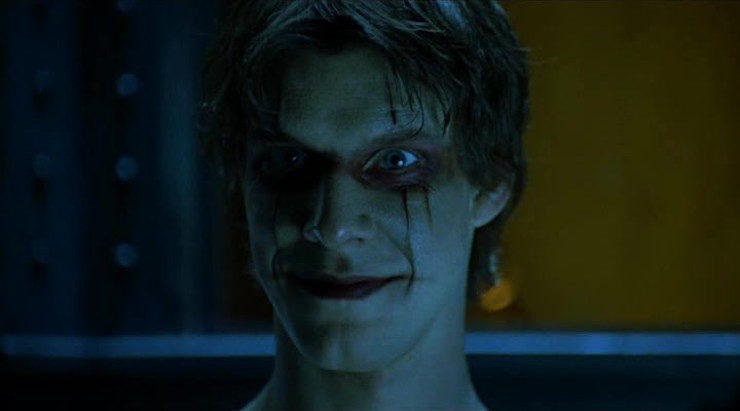
The Crow: Salvation
Written by Chip Johannessen
Directed by Bharat Nalluri
Produced by Edward R. Pressman and Jeff Most
Original release date: January 23, 2000
Alex Corvis has been convicted of murdering his girlfriend, Lauren Randall, by stabbing her 53 times. Corvis has insisted that he’s innocent, but the only person who believes him is his lawyer, Peter Walsh. Certainly the victim’s father, Nathan Randall, and Lauren’s sister Erin believe that Corvis is guilty. Four cops testified against Corvis, as did a witness who saw them fight shortly before she went missing. Corvis insisted a man with a series of scars on his left arm planted the knife that killed her in his truck.
Corvis is put in the electric chair. (Allegedly, this movie takes place in Salt Lake City, though it’s never specified on screen. Utah has never actually used electrocution as a method of capital punishment. By 1980, they mostly had converted to lethal injections, though Utah is also the last state to have allowed death by firing squad.) A lightning strike causes a surge, and the death takes much longer and is much more painful than it usually is. His face is completely burned.
After being taken to the morgue, Corvis is resurrected by a crow. The burns on his face peel off, revealing a face that looks very much like the mime-like makeup of the previous two Crows. His first stop is the police evidence control room, where he finds the knife that killed Lauren, which he takes with him, along with the witness list from the trial.
He pays a visit to Lauren’s grave. Erin shows up also, and she is still convinced that Corvis is guilty. Corvis says he will prove his innocence.
First he talks to the witness, Tommy Leonard, who admits that he only saw the fight, not the murder. The cops told him to testify that he saw the stabbing because Corvis would walk otherwise.
Corvis’s next stop is Dutton, whom he interrupts in the midst of an attempted statutory rape. Corvis shoots him in the head. Another corrupt cop, Madden, goes to a strip joint called the Key Club, which is owned and operated by Madden and the four cops who testified against Corvis. Madden informs the others—Erlich, Toomey, and Roberts—of Dutton’s death.
Erlich is no longer on active duty, as he was shot in the line of duty. Using the psychometry that the Crows sometimes have, Corvis has learned that the quartet of cops kidnapped Lauren and raped her. She fought back and managed to get Erlich’s gun and shoot him in the foot. Angered, the cops then stabbed her and set up Corvis.
Corvis kills Erlich by driving his car into a wall. Said car is owned by Erlich but registered to D.E.R.T., a company whose address is the same as that of the Randall family. Corvis shares this with a still-pissed-off Erin, who only very reluctantly looks at the registration card Corvis gives her, and then goes into her father’s files. She soon realizes that D.E.R.T. is in fact owned by her father and the cops who testified against Corvis were working with Randall. Erin now believes that Corvis was set up and her father was involved. Randall tries to deny it, but since he’s played by William Atherton, it’s impossible to believe he’s anything but corrupt and evil, and so he kills himself, possibly goaded on by the captain, who is the ringleader of the corrupt cops.
The witness list (with a bloodstain in the shape of, of course, a crow) was left behind in Erlich’s car, and Toomey and Roberts see it and panic, as they’re the next two names on the list, after the two corpses. They go to Leonard to find out what he said, and throw him out the window and shoot his wife. (It’s unclear what they do, if anything, to their infant son.)
Erin goes to Walsh, only to be kidnapped by the captain and Madden, who also shoot and kill Walsh. However, Walsh has already informed Corvis about some dirt he dug up on D.E.R.T. (ahem), including that they own the Key Club. Corvis goes to the Key Club, where his psychometry reveals that Lauren witnessed our gaggle of corrupt cops killing someone in the club’s back room, which is why she was targeted for kidnapping and rape. Killing her wasn’t part of the original plan, but her shooting Erlich changed things.
Roberts, Toomey, and several cops open fire on Corvis, which naturally does no good whatsoever. Roberts is impaled by a rebar, and everyone else is blown up when Madden shows up and shoots an automatic weapon after Toomey had broken a gas line. (It’s never made clear how Madden survived the explosion.) Among the remains, Corvis finds a left arm with the scar he remembers.
Corvis thinks his work is done, but Erin and Walsh are both missing, so he goes to the captain to find them. However, his powers are failing because he believes his vengeance is complete. The captain takes advantage of this and stabs him 53 times. However, Erin—who has been bound and her mouth sewn shut—manages to get the locket that she and Lauren had matching sets of into the hands of the crow, who drops it next to Corvis. That’s enough to resurrect him again, and he kills Madden and the captain’s secretary. For her part, Erin manages to use a scalpel to stab the captain, cut off her stitches, and shoot the captain in the ear. Corvis notices Walsh’s corpse is missing the left arm, and the captain himself has the scars. Erin and Corvis bring the captain to the prison and break into it, er, somehow, and electrocute him the same way Corvis was electrocuted.
Now Corvis can move on to the afterlife with Lauren. And hey, Erin just inherited a fortune!
“Get off me, you damn hallucination!”
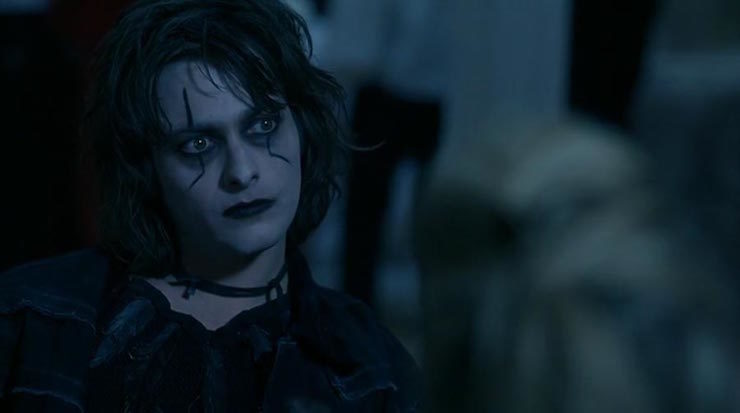
The Crow: Wicked Prayer
Written by Lance Mungia and Jeff Most and Sean Hood
Directed by Lance Mungia
Produced by Edward R. Pressman and Jeff Most
Original release date: June 3, 2005
In the mining town of Lake Ravasu, there is constant conflict between the miners and the members of the Raven Aztec tribe, who are building a casino. Jimmy Cuevo has just been paroled; he was imprisoned for beating a young man to death. Said young man was in the midst of raping a woman, but that doesn’t seem to matter as much as the murder. Cuevo is also in love with a Native girl, Lilly Ignites the Dawn. Lilly’s father is the local priest and her brother is the sheriff of the tribal police, and neither of them like or approve of Cuevo.
Four local guys have taken on the personas of the Four Horsemen of the Apocalypse, with an animus against either the Raven Aztecs, the mining company, or both. They’re led by Luc Crash, who fancies himself to be Death. His girlfriend Lola Byrne is part of the crew, too, and they plan to raise Satan.
Cuevo is en route to propose to Lilly. He’s stopped first by the sheriff, who doesn’t want him anywhere near his sister, and then he walks in on Crash and the rest, who have tied her up and cut her eyes out. Byrne now has the gift of prophecy, thanks to taking Lilly’s eyes. Crash cuts Cuevo’s heart out and it dissolves, giving him the power of Satan.
The Horsemen head to a dump, toss the two corpses in an old freezer, toss that into the oily water, and then set it afire. However, Cuevo is resurrected by the crow. He isn’t thrilled with being brought back to life, and even tries to kill himself—which is how he finds out that he can’t be hurt. He leaves Lilly’s body for her brother to find, but the sheriff just thinks that Cuevo is responsible.
Almost reluctantly, Cuevo goes on his mission of vengeance, after burning down his trailer (and leaving his dog homeless, which is just mean), and changing into the outfit he wore for a party at the reservation years ago that looks just like the other stars of the Crow movies!!!! He finds Pestilence in a bar, getting a batch of peyote for Crash and the gang. The gang, meanwhile, has gone off to take vengeance on the priest who killed Crash’s father, and is now atoning for it by being a priest. That same priest’s son is the guy that Cuevo killed. Because Lake Ravasu apparently only has ten people in it.
After killing Pestilence, Cuevo goes to the priest, but Crash is long gone. Cuevo does heal the priest of his gunshot wound, which is enough to keep his wife from shooting their son’s killer, but not enough for her to forgive him. (Not that shooting him would’ve worked, but she doesn’t know that.) Cuevo also steals the hearse that has Lilly’s body and buries it, leaving the coroner on the side of the road.
Cuevo tracks down Crash, Byrne, War, and Famine at the casino. Cuevo kills Famine, but Crash wounds the crow, which leaves Cuevo vulnerable. War shoots him (and most of the casino guests) and they all leave. The sheriff finds Cuevo and thinks he’s responsible for the massacre, but Cuevo is able to touch him and show his memories to reveal what has actually happened.
Crash and Byrne need to perform a ritual involving sacrificing a virgin and getting married and having sex on a burial ground, which will bring Satan to Earth. They have trouble locating a virgin, but they do eventually track one down on the side of the road: the coroner. They go to El Niño, their mentor, to perform the wedding. Byrne was one of Niño’s prostitutes until she ran away, stealing the spellbook they’ve been using from him, but given that Crash is now channeling Satan’s power, Niño is willing to forgive and forget.
He performs the wedding, which ends with Byrne stabbing Crash. He dies, and then is resurrected as Lucifer his own self. Byrne then kills Niño in long-desired revenge.
Lilly’s father and brother and a posse show up, as do Cuevo. Cuevo takes out War, but Lucifer takes out Cuevo, stringing him up and then driving off in the hearse to find a burial ground to have sex on. The priest and sheriff look on in shock, especially when Byrne casually confesses to murdering Lilly. Crash and Byrne must consummate their marriage before sunrise in order for Lucifer to fully manifest. The priest performs the Crow Dance to resurrect the crow and give Cuevo his invulnerability back. Cuevo interrupts Crash and Byrne in mid-coitus to fight.
In the end, Cuevo triumphs, mostly by holding out until sunrise. Cuevo impales Crash on a rock and Lucifer is sent back to hell. The sheriff stops his father from killing Byrne, and instead he arrests her for Lilly’s murder.
Cuevo goes to the afterlife where he finally gets to propose to Lilly and live happily ever after.
“Can’t rain all the time.”
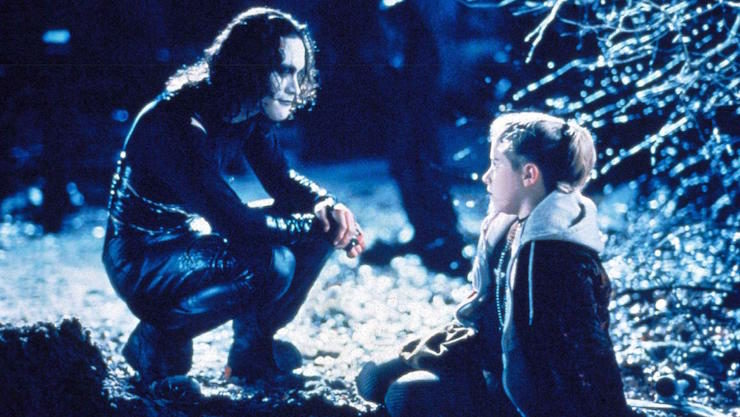
There’s an AM radio station here in New York called WINS. Their motto is “You give us 22 minutes, we’ll give you the world.” The first car I owned was a 1977 Ford Pinto, and the FM radio died at some point when I owned it, and so all I had to listen to was AM radio. I tried listening to WINS, figuring I may as well be informed, but doing so, I discovered the implied second part of the slogan: “You give us 44 minutes, we’ll give you the world twice.” Listening to news radio for more than 20 minutes is not a good use of one’s time, as you just get the same stuff over and over again.
Watching the four Crow movies in a row is very much like listening to news radio. The four movies all have basically the same plot, and the variations between them are minor and irrelevant. It’s all the same damn plot: man and person man loves both die at the hands of four people, plus a few extra others. Man comes back as spirit of vengeance thanks to a crow. Man takes super-powered vengeance on the killers, taking them on one at a time, culminating in the big boss. Lather, rinse, repeat.
When I first saw The Crow in the theatre in 1994, I was impressed. I loved the visuals, and I was absorbed by the plot. It helped that it was on a big screen and that it had some excellent talent in supporting roles—Tony Todd, Jon Polito, and especially Ernie Hudson as Albrecht.
When I saw it again on video a few years later, I wondered what I was smoking when I saw it the first time. All I saw was a pretentious piece of claptrap.
And that’s all I saw this time, only it just kept getting worse with each movie. Brandon Lee at least brought a certain energy to the role, but Draven’s love for Webster is just a bunch of quick-cut flashbacks that don’t give enough context. (Some of this is due to Lee’s untimely death, which happened before he could finish filming the scenes with Webster.) The character of Sarah was important in the original (she’s named Sherri in the comics), but she’s utterly superfluous here except as a hostage. Draven’s relationship with Albrecht has more verve, mostly due to Ernie Hudson, who is the movie’s one true saving grace.
City of Angels has no such relief. Vincent Pérez counts on his arm gestures and brooding to do the acting work for him. Corven’s love for his son is much more clear and emotionally binding to the viewer than Draven’s love for Webster was, but the killers are just Top Dollar’s gang only in Los Angeles, down to having an Asian woman as part of the inner circle. Richard Brooks as Earl is a much more interesting villain than Michael Wincott as Top Dollar, but that’s mostly because almost anything would be better than Wincott doing his third-rate Clancy-Brown-as-the-Kurgan act.
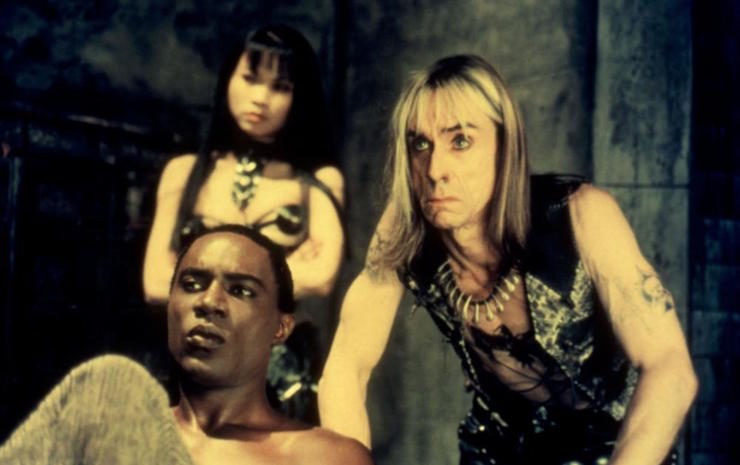
Salvation takes a different tack by giving the main character a redemption arc to go with the vengeance arc. Corvis is accused of the murder of his true love, and after suffering capital punishment he comes back to wreak revenge on the real killers. Eric Mabius doesn’t really do the don’t-hate-me-because-I’m-beautiful broody Goth thing the way Lee and Pérez did, and unfortunately, he’s not snarky enough to really embrace the snotty dialogue he’s been given, so his Crow turns out to be kinda lifeless.
The Goth aesthetic is pretty much tossed aside here for a straight-up corrupt-cop storyline. It’s fun to see a younger Walton Goggins and Tim DeKay as two of the corrupt cops. It’s less fun to see Fred Ward and William Atherton in roles that turn out to be bad guys, which is a total non-surprise due to the casting choice. I mean, c’mon, Ward and Atherton aren’t likely to play good guys now, are they? Kirsten Dunst does the best she can given absolutely nothing to work with in a tiresomely generic grieving-sister role—as it is, she’s the only person who manages to get higher billing than the title character. Our villains come across as actual bad guys you’d find in real life, at least. Top Dollar and Judah Earl are the type of gangsters you only actually see in fiction; a real gangster got that weird, he’d probably get his ass shot inside a few weeks. Corrupt cops, though, are a bit more straightforward. Overall, though, the third movie removes what made the first two stand out: the Goth aesthetic, the visuals, and the soundtrack. (Also, D.E.R.T. for the name of an organization that supports dirty cops? Real subtle there, folks…)
Amusingly, I actually liked Cuevo in Wicked Prayer best of the four protagonists. Edward Furlong looked absurd in the mime-from-hell Crow look, but of the four leads, he’s the one who most provided a character. Jimmy Cuevo was a person whom I could identify with and understand and feel sorry for. Part of it is that Cuevo so totally doesn’t want to be a vengeance spirit. He just wants to die, and this stupid crow won’t let him. His reluctance is a nice twist on the story we’ve already gotten way too many times before.
Sadly, the movie around him is a disaster. The script is laughably bad, the plot inane. While Salvation gave us slightly more realistic bad guys, Wicked Prayer goes all the way in the other direction, as the Four Horsemen are ridiculously over the top and absurd. The movie introduces a conflict between miners and Natives that goes precisely nowhere.
David Boreanaz is the type of actor who usually got cast in the title role of a Crow movie. In fact, he was on the tail end of that broody, dark, oh-god-I’m-so-tortured phase that he was starting to age out of on Buffy the Vampire Slayer and Angel, and about to transition into his current mode as action/procedural dude on Bones and now Navy SEALs. He chews lots of scenery here, but the role is a dud.
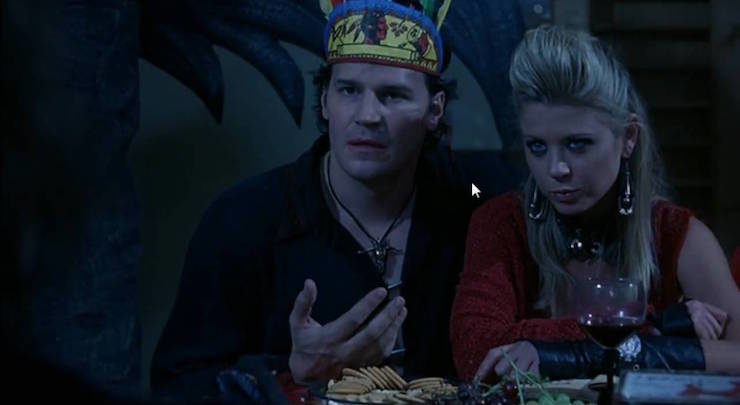
He’s not the only one wasted. While it’s to the filmmakers’ credit that Danny Trejo is not the villain as you’d expect because, well, Danny Trejo, it’s to their lack of credit that his role is so very nowhere. And Dennis Hopper practically is checking his watch while reading his lines wondering when he can go get a drink somewhere. His line readings are that of someone who is slumming and knows it and really just hopes the check clears.
The Crow reminds me of another black-and-white independent comic book, Sin City. The first Sin City miniseries was fantastic, great fun to read. But with each passing miniseries it got less and less interesting, and tremendously repetitive, and it soon became clear that there was only one story to tell, and it was being repeated constantly. (This is also why the second Sin City movie failed.) It’s true with The Crow as well. There’s only so far vengeance will take you, and so many ways you can do it. The first movie, frankly, exhausted most of them—in each case, the punishment fit the crime, as it were, as each death was appropriate to each character’s MO. By hewing so close to a formula (four killers! man must claim vengeance while woman gets to just stay dead! The Crow must blow up a building at some point! a bad guy must be impaled!), the films are straitjacketed.
In the end, if you give The Crow two hours, they’ll give you a stylistic, somewhat dumb story of vengeance and true love. If you give them eight hours, they’ll give you the same stylistic, somewhat dumb story of vengeance and true love four times.
After this little Hallowe’en diversion, we’ll be back in our usual slot on Friday with a look at the first three Teenage Mutant Ninja Turtles movies.
Keith R.A. DeCandido wishes everyone a Happy Hallowe’en! He will be the special guest at the Providence Literary Festival in Providence, Kentucky this weekend. Come on by and say hi!











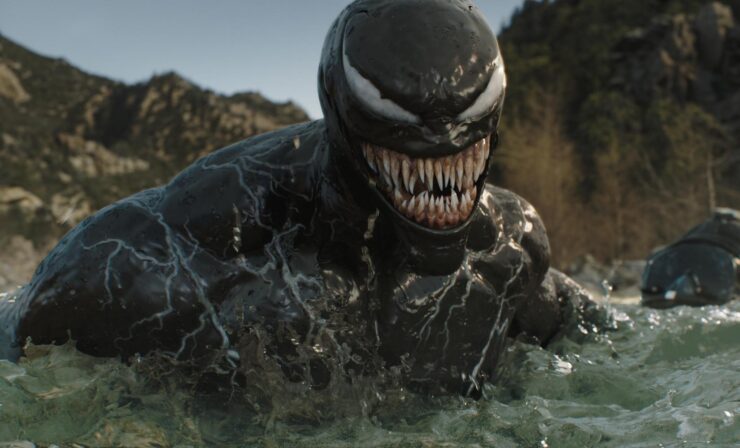
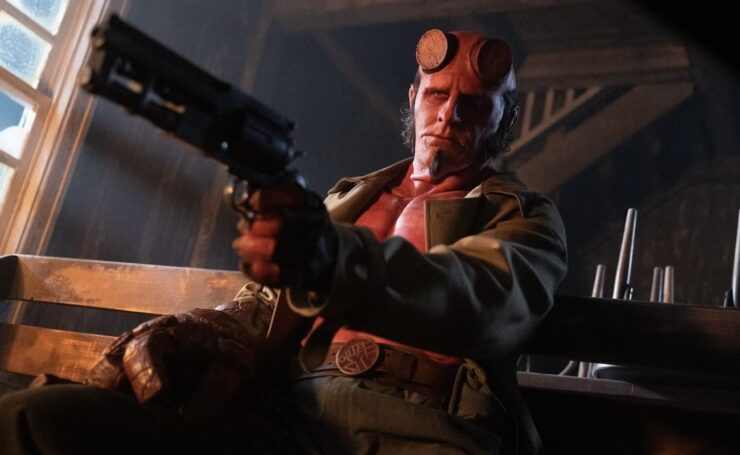
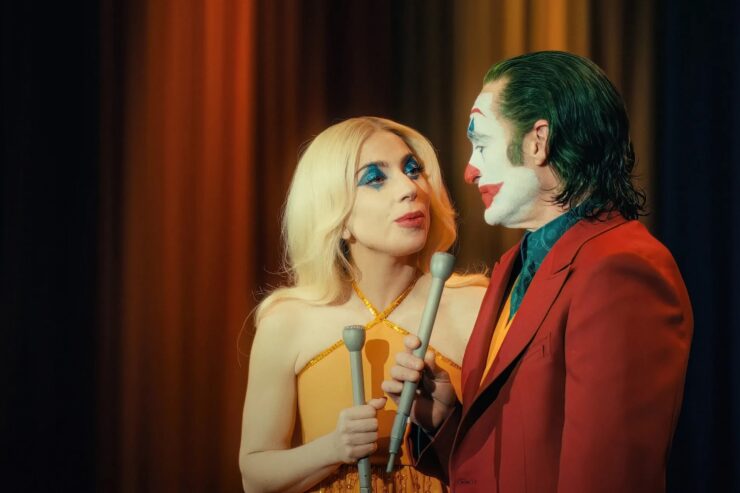
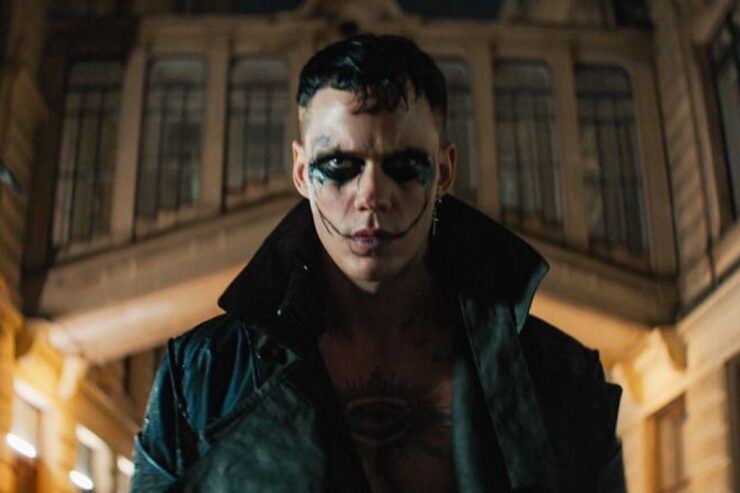
If you ever want to read interesting stuff about the making of the first Crow movie, check out David J Schow’s writings. Fascinating glimpses into the horror genre of the time.
I’ve never seen these movies or read the comic, so I haven’t got a lot to say. My only memory of the Crow is that I bought some white face-paint to use for a Halloween costume in college, but my roommate used it all up trying to do a Crow costume, messing it up, wiping it all off, and reapplying. A weak story, but at least it’s appropriate for today.
I admit to still having a lot of fondness for the original. Never saw any of the sequels, which sounds like it was the proper course of action.
And the first movie also had a great soundtrack.
krad, you wrote psychokinesis, but you meant psychometry. I was wondering “when did a Crow use tk?”.
“Cuevo”? “Raven Aztecs”? “Lilly Ignites The Dawn”? An Aztec Casino? Ugh….
@2 – Brian: I was a bit of a Crow fan back in the 90s, and one time I spent some time putting together my costume for a Halloween party… and this happened.
MaGnUs: thank you! It’s fixed….
—Keith R.A. DeCandido
I was precisely the right age and demographic to be fully enthralled by the first one – 17, angsty young girl who felt like an outsider, desperately wanted to be important *somehow* – Sarah was put into this movie for me. To this day, I can’t listen to The Cure without an intense desire to relisten to the soundtrack, and I’ve zealously avoided watching it again (or any of the others) for fear of taunting the Suck Fairy.
arianrose: You are wise to continue that avoidance. Best to enjoy the memories rather than ruin them.
—Keith R.A. DeCandido
@5 – krad: No worries.
Maybe you should have kept smoking, Keith. The Crow was and is an awesome movie!
The Crow is at the center of my teenage years. I haven’t seen it in years, but so much of my identity was tied up in the goth aesthetic espoused by these films.
but the real winner in each of the first three movies was the soundtrack. The first movie introduced my twelve year old self to NIN, The Cure, Pantera, Violent Femmes, etc. The second movie intro’d me to Korn, Rob Zombie, Deftones, and while the third one didn’t bring me anything new, it did contain some new tunes from bands I’d grown to love.
so even if you hated these movies, it was nigh impossible to hate the music.
mitchimus: Yeah, the music for all four movies were perfect for them. Not to my personal tastes, but very nicely done.
Pity they didn’t have stories to live up to them.
—Keith R.A. DeCandido
You’re pulling a lurker out of into the sunlight for this one. The first Crow is a solid classic. I’ve seen a bunch of pieces lately reappraising the Matrix now that the Bullet Time backlash has subsided, and this movie deserves similar reconsideration (and, Mr. Green, Dark City is the link between them!) It’s like an inversion of the Fifth Element; the plot is not revelatory, and the characters aren’t particularly deep, but they are memorable, entertaining, and iconic. It’s a lot more fun than Blade Runner. It’s a year before City of Lost Children. It’s… a little juvenile, sure. But not an embarrassment.
I’ve seen all of the movies, but I loved the television series the best. Worth watching, if you have the time to kill.
Though you’ve watched it more recently than me, I’m pretty sure that in the second Crow film the crow warns Corven against going to save Sarah because his vengeance was complete. Corven chooses to give up his final rest and reuniting with Danny in order to save Sarah, who then dies, and Corven is doomed to walk the Earth.
The second film should have stuck with a female Crow IMHO.
It did try some cool things (that didn’t work) like having the tagging on the walls operate like a Greek chorus.
I still love the first movie. I’ve seen it so many times I can quote most of the dialogue. Introduced it to my little sisteer last year and she loved it too. I’m surprised you didn’t have xplain it the way I tend to; The Crow is goth Death Wish just like RoboCop is cyber Death Wish. Many movies follew the Death Wish formula. (That’s the oldest movie I’ve seen with the same basic structure, if anyone knows of an older film, point me up n the right direction.)
As a fan of so-bad-it’s-good movies, I rather enjoyed Wicked Prayer; in particular I loved how delightfully over-the-top the villains were.
The first one was stylish and different, if wrenching; it’s not an easy rewatch even when you loved it. The audience I first saw it with certainly did: a theater full of comics retailers at the sneak preview Kitchen Sink arranged during the Capital City trade show in St. Louis. Comics were still such big business in 1994 that a publisher could pull that off; also during that show, Marvel rented Busch Stadium for a softball game with the retailers!
Krad: “When I first saw The Crow in the theatre in 1994, I was impressed…. When I saw it again on video a few years later, I wondered what I was smoking when I saw it the first time. All I saw was a pretentious piece of claptrap.”
Based on my one and only viewing of The Crow, I’d have to agree with your revised assessment. I was writing a newspaper movie review column at the time and I gave The Crow a C-. On the other hand, I gave Brandon Lee’s performance a B and noted that if not for him, Ernie Hudson (Albrecht) and Rochelle Davis (Sarah), the only characters I could identify with, I’d have probably given the film an F.
Rick.
Back in 1997 or so, I got to pitch to the Crow anthology that Ed Kramer was putting together with James O’Barr. It was called Shattered Lives and Broken Dreams, and my pitch didn’t make the cut, which always disappointed me.
The story I proposed was that the person who died and was resurrected to enact revenge for a loved one was an overweight teenage nerd who pined for the prettiest girl in high school, but could never work up the nerve to even talk to her. They’re both killed, and our nerdy boy becomes the latest Crow, only while he has the usual invulnerability, he doesn’t have any of the physical skills. Makes for a challenging attempt at vengeance…..
But Kramer and O’Barr didn’t go for it. Sigh.
—Keith R.A. DeCandido
I would have read that overweight crow story. I do wonder were the amazing physical skills come from in Crows, as I don’t remember any of them being that skilled (that we knew of) before dying.
I still love the first movie and always will. I completely understand why some people wouldn’t care for it but for me it is near perfection. I’ve only seen one of the sequels, don’t even remember which one and it completely lacked the magic of the first.
I love the first movie. I thought the second one was disappointing so didn’t see the third one, then made the mistake of seeing Wicked Prayer, because I had read the really decent Partridge novel first, and was then presented with a huge pile of stinking dreck movie.
I highly recommend two of the other Crow novels: The Lazarus Heart by Poppy Z Brite (expect her usual transgressive shenanigans) and Temple of Night by SP Somtow (set in Thailand).
MaGnUs: Eric Mabius’s Crow was implied to have some martial arts skills before his death in one of the flashbacks with his girlfriend.
—Keith R.A. DeCandido
I only saw the first two, and neither character was implied to be adept at combat. Draven was an artist, IIRC? (Of course, artists can be martially competent too, but I meant that we were given no indications that he possessed those skills crowing up.)
I still enjoy the first Crow and of the other three, have only seen Salvation. I liked that it played with the origin of the character a bit, but other than that, I’ve never felt the need to go back and watch it just like I’ve never felt the need to watch City of Angels or Wicked Prayer. Like you said, they’re all variations of the first movie, so why watch them…
Only just found this column, thanks to Keith linking to it in the newest one. I was on a trip the day this got posted, so I never got around to reading it. Although I’ve never seen any of these movies anyway, and it doesn’t sound like I’d want to, since I hate revenge stories.
This is a bit belated, but Keith, both IMDb and Wikipedia agree that the lead character of the fourth film is named Cuervo (Spanish for “crow”), not Cuevo.
Seriously, though… Draven, Corven, Corvis, Cuervo? So, this supernatural crow vengeance spirit thingy only extends its assistance to people whose surnames already mean “Crow”? I guess that makes sense in a weird way, since I can’t think of any other reason why it would want to do that. Though it kind of fits that a corvid would be a spirit of vengeance, because there are stories about how crows and ravens remember the faces of people who were mean to them and continue to harass those people in retaliation whenever they see them.
I’m curious, though — the second film is clearly a sequel to the first, but are the direct-to-video films explicitly sequels, or could they be considered semi-remakes/alternate continuities?
@@@@@ 26 – if it’s any comfort, me too.
I like the way they made Draven an artist. It at least gives a semblance of sense to the make-up and stuff like the flaming oil slick in the shape of a crow. That stuff is really hard to do right, especially first time.
I mean, films like Daredevil and the Punisher films take the time to establish how they got their butt-kicking skills. Then you have the interlinked double D in oil (that Cypher Ben Ulrich just happens to recognise and light for the benefit of those Police) or the exploding cars set up in the shape of a death’s-head (that you have to be at a certain height above the car park to appreciate). They both only had a short time to set those up. Where’s the backstory explaining those kind of skills? They aren’t exactly the type you pick up without a lot of practice…
So at least there’s the possibility Draven had devoted some time to developing how to create such ephemeral artwork using flaming gasoline as his medium.
The original has a special place in my heart and I try to watch it every year (on October 30, naturally). The rest I watched once and never again.
In January 1994, the love of my life was murdered.
In May 1994, “The Crow” was released. I both loved and hated it. Loved, because those “cut-away flashbacks” were sufficient for me, and for anyone else who has ever loved someone more than life itself, to believe that Eric Draven loved Shelly Webster and would gladly suffer and die a second time to avenge her murder. Hated, because in real life the woman I loved can’t come back, not even briefly to avenge her own slaying.
You may think the movie was juvenile, a waste of time, beneath any person of taste.
Those of us who have loved someone who was murdered–and in these violent, gun-happy United States we are MANY–have a very different perspective about “The Crow.” We watch that movie and for two hours we don’t feel alone. It’s a story written by someone who understands exactly the heartbreak we feel.
I hope you never suffer the misfortune to appreciate “The Crow” the way we who’ve lost a loved one to murder do.
Molly: Thank you for sharing this story, and for the reminder of how important art is to the human condition.
FWIW, I don’t think any movie is a waste of time, and if I gave that impression, I deeply apologize, as that was not my intent. I actually liked The Crow a lot when I first saw it in theatres, but for me, at least, it didn’t age well on a second viewing, or a third.
And it’s a good reminder: nothing achieves 100% praise or 100% criticism. Every piece of art is liked by someone, and that’s why it’s always worthwhile.
—Keith R.A. DeCandido